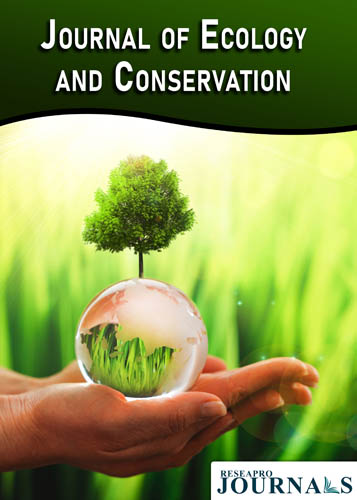
Journal of Ecology and Conservation
OPEN ACCESS

OPEN ACCESS

1Department of Forest Management Science, Faculty of Forest Sciences and Technology,2University of Gezira, SudanDepartment of Documentation and Publication, Deanship of Scientific Research and Innovation, University of Gezira, Sudan
Species richness and diversity are key indicators of ecosystem resilience and sustainability. However, identifying vulnerable and rare tree species in a particular environment can effectively guide its sustainable management and restoration plans. Therefore, this study explored the conservation trends of tree species in Okalma Natural Reserved Forest based on their importance value index and regeneration status. The study used a systematic sampling design, by which the Okalma forest was divided into 11 transects and each transect was further subdivided into sample plots. The seedlings, saplings, and mature trees were identified and measured in 84 sample plots of 1000 m2, which were systematically distributed across the study area. Based on the species regeneration pattern and importance value index, the study classified the tree species of Okalma forest into rare, vulnerable, in-between, subdominant, and dominant species. The mean density of dominant tree seedlings was six times equal to vulnerable ones with significant differences (F4, 83 = 144.7 and P <0.01). While 10% of the identified tree species displayed a good regeneration pattern, 55% and 20% showed none and poor regeneration, respectively. However, the conservation trends show that 60% of Okalma tree species were rare, with no regeneration and limited relative frequency. These results highlighted the signs of biodiversity decline due to anthropogenic pressure and high consumption rates, which calls for conservation measures and restoration plans. The study recommends the introduction of community forests outside the reserve and intensive extension programs.
1Department of Forest Management Science, Faculty of Forest Sciences and Technology,2University of Gezira, SudanDepartment of Documentation and Publication, Deanship of Scientific Research and Innovation, University of Gezira, Sudan